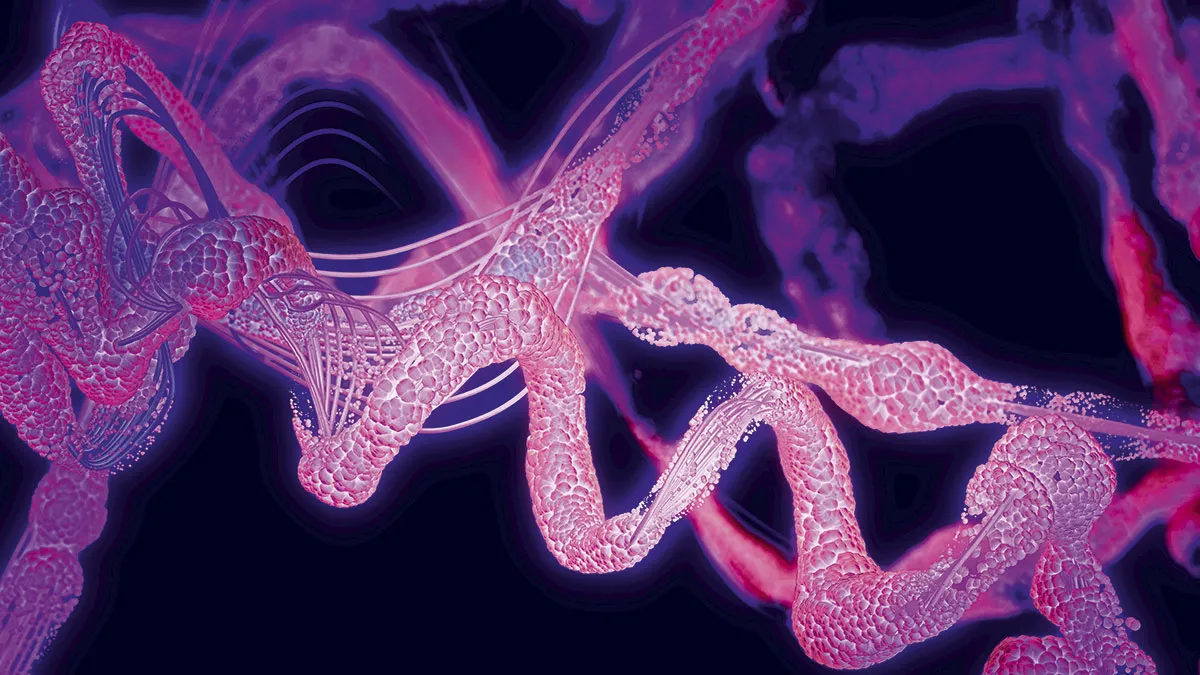Open your eyes anywhere on Earth and there is life: whether it’s a pigeon in the park or the invisible microorganisms coating every surface. But when the planet was born 4.5 billion years ago, it was sterile. How did the first life emerge?
The short answer is we don’t know. If we did, we could reproduce it. Scientists could put the right chemicals in a sealed container under the correct conditions and when they opened it, they’d find living organisms. Nobody has ever done this.
But while we don’t know exactly how life began, we have a lot of clues.
Let’s start with the easiest bits: what is life made of and where did those components come from? Living organisms contain thousands of chemicals: like proteins and nucleic acids that carry our genetic information. These chemicals are complex, but we now know that their constituent parts form quite readily.
The first evidence of this was published in 1953 by a young chemist named Stanley Miller. He put water and three gases in a glass apparatus, mimicking the sea and air of the young Earth. Miller heated the water and electrically shocked the air to simulate lightning. Within days, this setup produced an amino acid: a fragment of protein.
Since then, scientists have performed many similar studies. In research published in September 2020, researchers led by Sara Szymkuć (now president of start-up firm Allchemy Inc), compiled dozens of experiments. They created a ‘map’ showing how chemicals can be transformed one into another. Starting with just six everyday chemicals, such as water and methane, they could make tens of thousands of substances found in living organisms.
The implication is that the young Earth was a factory of biological chemicals. But having lots of these chemicals doesn’t necessarily yield life, any more than a pile of bricks will automatically become a house.
This is where things get tricky, because we must think about what makes something alive. It boils down to three things. First, the organism has to keep itself together, often with an outer layer, the removal of which is immediately problematic. Second, it must feed itself. This involves complex chemical reactions. And third, life has to reproduce itself, which means it must have genes it can pass on.

The last 50 years of origin-of-life research were dominated by attempts to make one of these systems on its own: for instance, a genetic molecule that reproduced by copying itself. The other bits were assumed to come later.
Personally, I’m dubious about this approach. None of the three systems is alive by itself: they need each other. What’s more, if Earth was doing such a good job of making all the chemicals of life, it may be that all three systems formed simultaneously in the same place. This would have happened more readily in a confined space, such as a deep-sea hydrothermal vent or a pool on land.
Exactly how life originated is still unclear, but what was once utterly mysterious now seems much less inexplicable.
Read more: